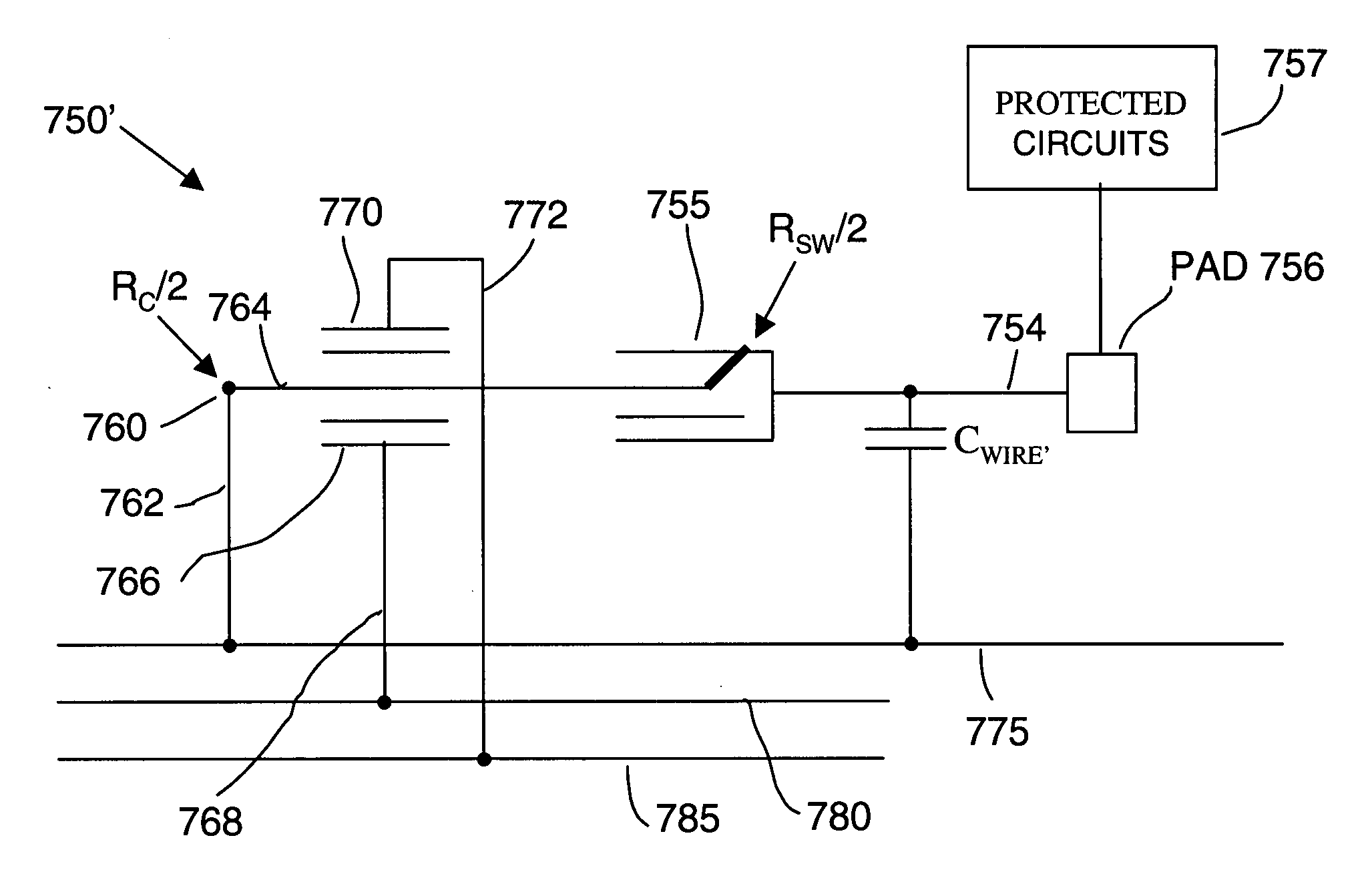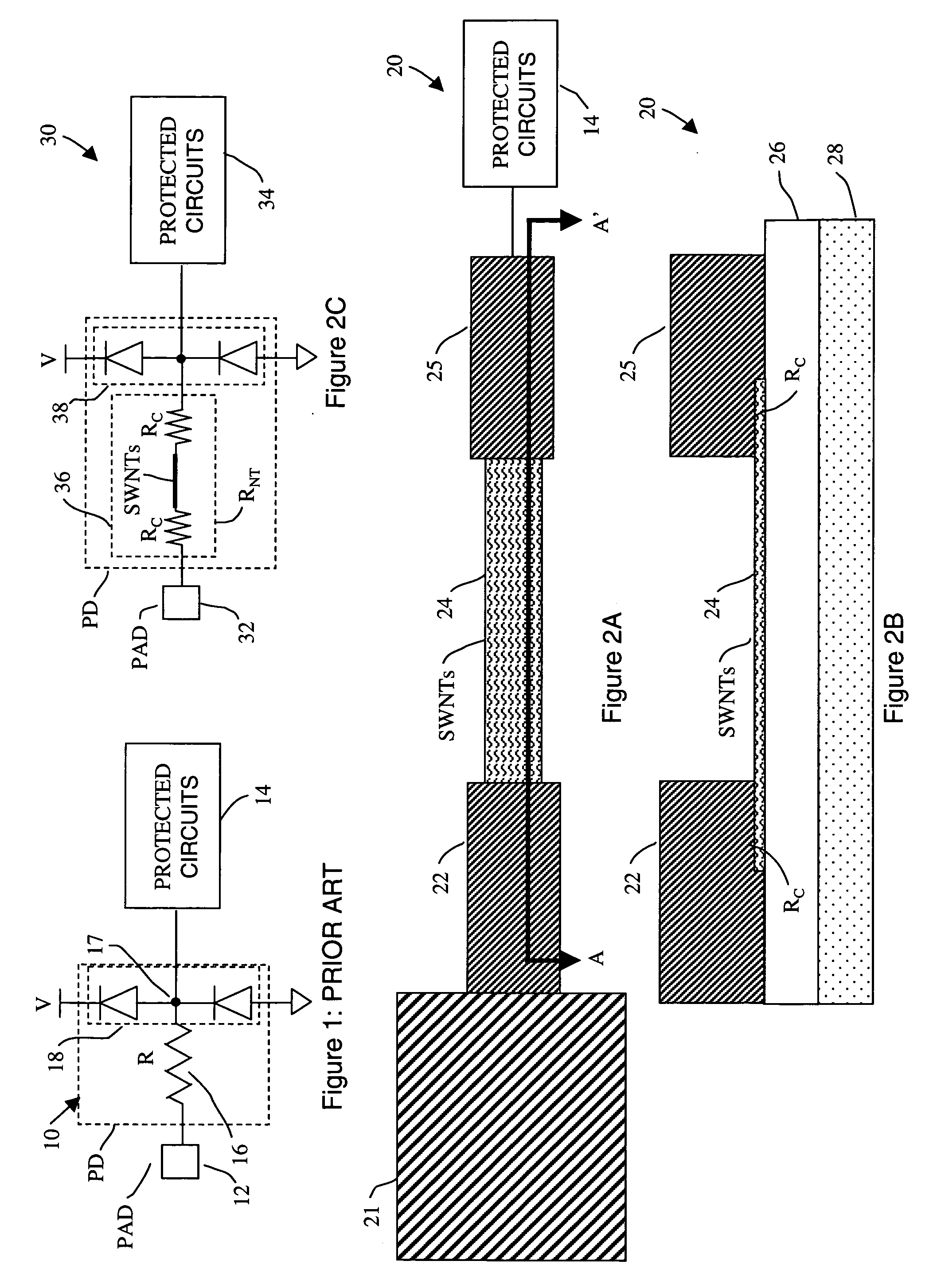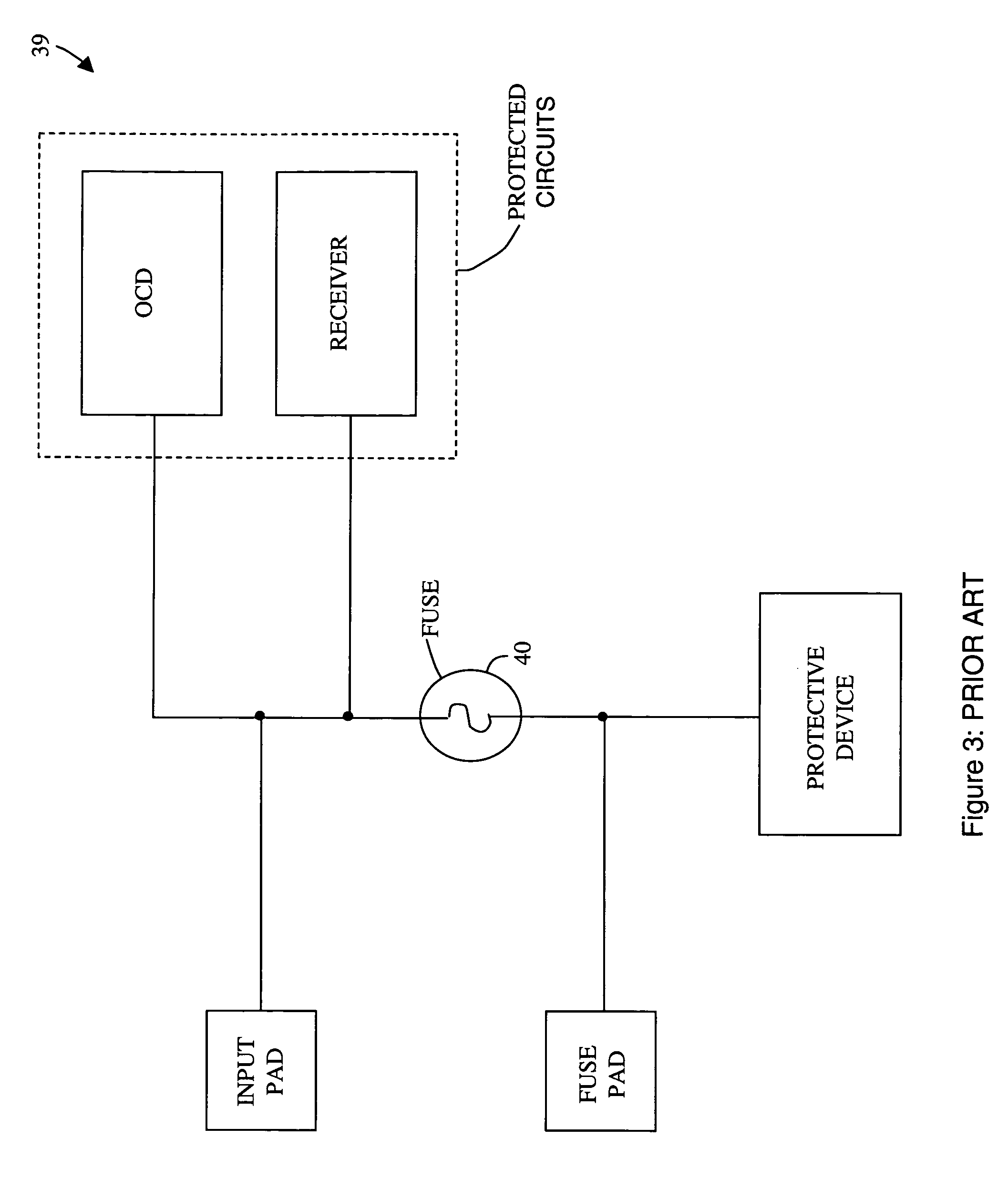Nanotube ESD protective devices and corresponding nonvolatile and volatile nanotube switches
a technology of nanotubes and nanotubes, applied in the direction of circuit electrostatic discharge protection, semiconductor/solid-state device details, instruments, etc., can solve the problems of resistor rupture, open circuit and short circuit, oxide and junction failure,
- Summary
- Abstract
- Description
- Claims
- Application Information
AI Technical Summary
Benefits of technology
Problems solved by technology
Method used
Image
Examples
Embodiment Construction
[0090] Non-volatile carbon nanotube protective devices offer an opportunity to enhance present electronic device protection by adding non-volatile carbon nanotube protective devices to prior art protective devices that require protective diodes as part of their structures. Nonvolatile nanotube protective device structures have much lower accompanying capacitance values than presently used protective devices, so that adding nonvolatile nanotube protective devices to existing electronic protective devices will not measurably increase capacitive loading. Capacitive loading by present protective devices introduces performance limitations, so that replacing these devices with non-volatile carbon nanotube protective devices reduces capacitive loading of inputs and outputs facilitating higher operating speeds. Carbon nanotube protective devices may be used on any substrate, such as silicon, ceramic, organic, etc. and may therefore be added at any level of assembly such as chip, substrate, ...
PUM
| Property | Measurement | Unit |
|---|---|---|
| Electric impedance | aaaaa | aaaaa |
Abstract
Description
Claims
Application Information
 Login to View More
Login to View More - R&D
- Intellectual Property
- Life Sciences
- Materials
- Tech Scout
- Unparalleled Data Quality
- Higher Quality Content
- 60% Fewer Hallucinations
Browse by: Latest US Patents, China's latest patents, Technical Efficacy Thesaurus, Application Domain, Technology Topic, Popular Technical Reports.
© 2025 PatSnap. All rights reserved.Legal|Privacy policy|Modern Slavery Act Transparency Statement|Sitemap|About US| Contact US: help@patsnap.com



